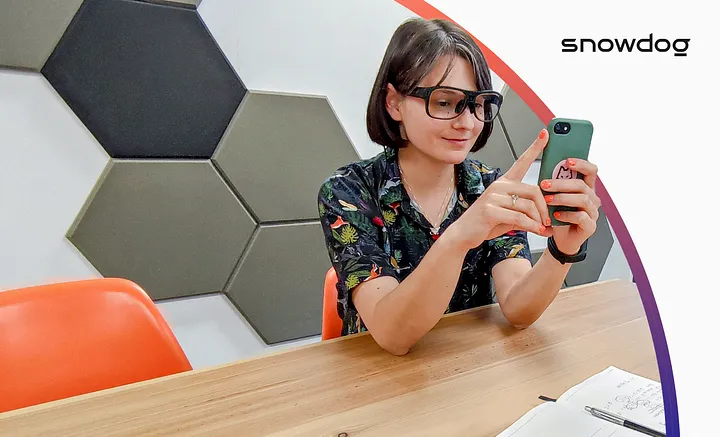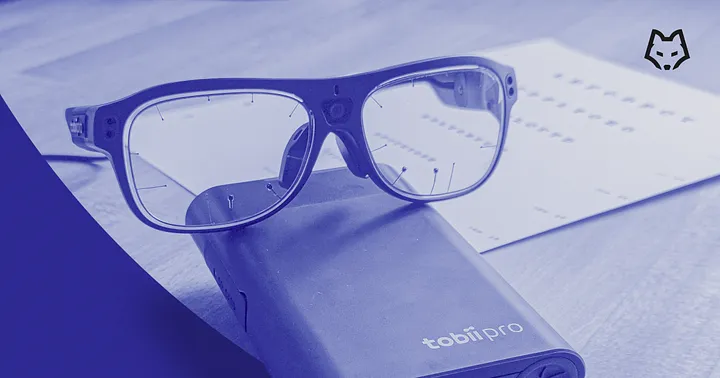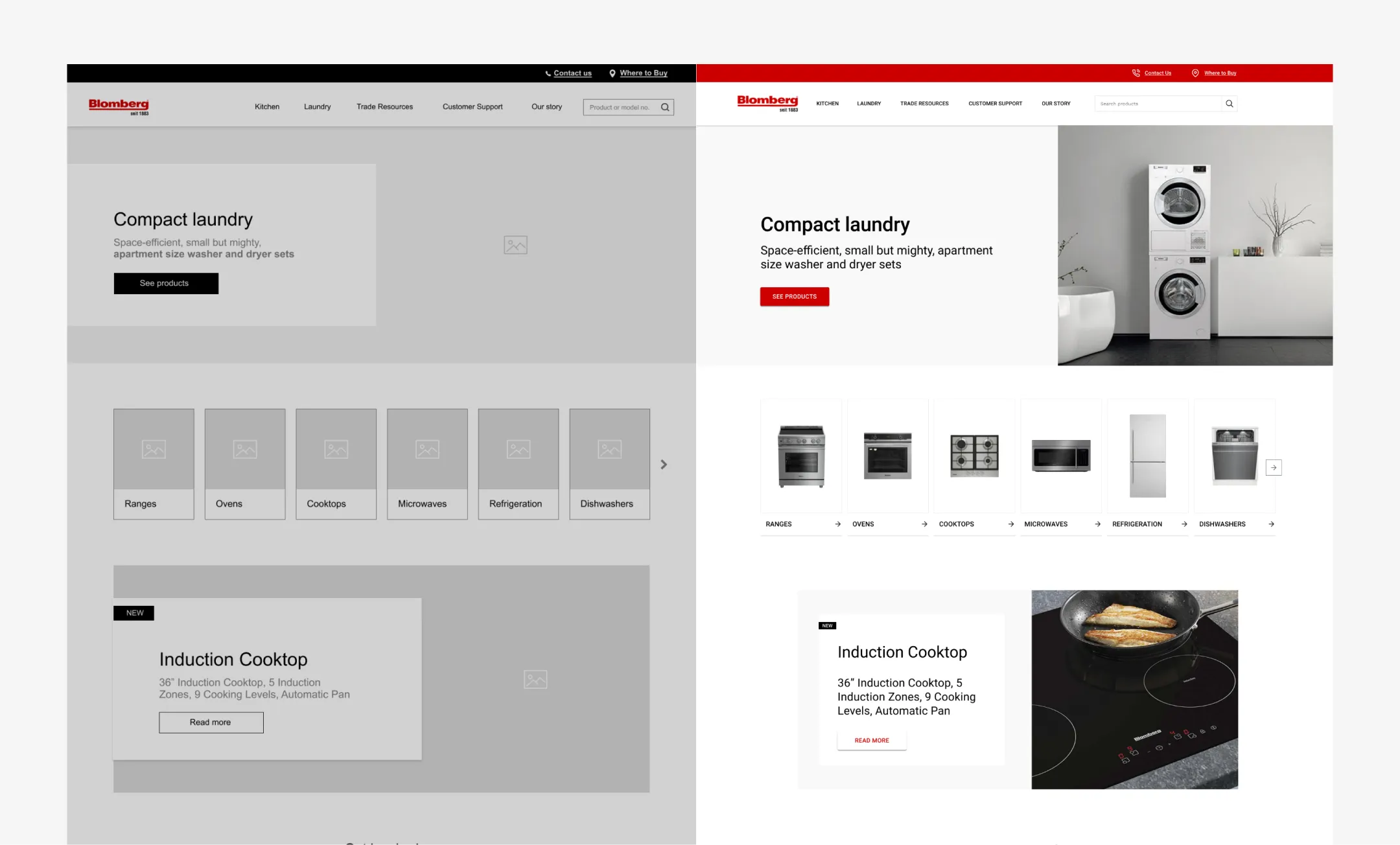
Emotions such as happiness, determination, sadness, anger, and shock can be accurately perceived from the eyes alone, as research reveals. The subtle movements of squinting, widening, shrinking, or expanding can provide valuable insights. After all, as the popular saying goes, the eyes are windows to the soul.
However, modern technology allows us to delve even deeper into the wealth of information our eyes can convey.
Eye-tracking technology is not a recent development. Its origins trace back to 1879 when researchers first observed the movements of naked eyes during reading. Over time, this technology has advanced and become accessible even to smaller businesses, offering valuable data collection opportunities.
At Snowdog, we are constantly on the lookout for new tools to assist us in serving our clients in innovative ways. Recognizing the potential of eye-tracking technology for both online and offline applications, we made the decision to invest in eye-tracking equipment and analysis software, thereby augmenting the capabilities of our UX research department.
In this space, we would like to delve into the world of eye tracking, explore its applications in user experience research, and share how we plan to leverage it at Snowdog.
UX Research - What is that?
The goal of UX research is to find out as much as possible about users, as well as their needs and requirements.
Such research should be an ongoing process. As user bases along with their needs change and new technologies make their way into the market, a systematic UX study can help companies make informed design decisions.
UX research can be qualitative (e.g. user interviews), quantitative (e.g. surveys), as well as behavioral (e.g. user observation).
A solid User Experience study will have a mix of all of those types of methods.
Eye-tracking is a great tool that will support our existing techniques in measuring and enhancing both on- and offline experiences. It will provide us with useful and unique data on what users look at and focus on. This will allow us to gain insight into how they interact with products, websites and physical objects.
Eye Tracking - How does it actually work?
Before we delve into eye-tracking, let’s first give you some background into how our eyes work.
When you look directly at something — or in other words, fixate — the image hits your fovea. It’s a part of your retina responsible for receiving and relaying images of the greatest acuity. However, it only comprises around 2% of what we see. The remaining 98% are peripheral vision. An eye-tracker looks at that foveal 2 %, examining how your direct vision moves and what it fixates on.
There is not a singular eye-tracker technology — they can range from a machine that looks at red light reflection against the eye, to electrodes encased in contact lenses. The goal, is the same; recording and measuring eye movement.

Our device takes the form of a pair of glasses with two eye cameras and eight IR illuminators on each lens. It has another camera in the middle, where the two lenses are connected. It records objects the test subjects look at, and this image is later merged with their recorded eye movements.
This technology has applications that go far beyond UX. It’s being used for facilitating human-computer interactions for people unable to use a PC, psychology research, design or marketing.
But for the purpose of this article, let’s focus on User Experience, specifically in eCommerce and commerce applications.
What info can you get from Eye Tracker Research?
Now that you know what an eye-tracker is and how it collects data, let’s examine what it is that you can actually learn with it. There are, of course, many attributes you can research with an eye-tracker, both quantitative and qualitative, but the two we included below are perhaps the most significant.
Gaze plot
Gaze plots measure the pathway our eyes took while performing a certain task, as well as the time we’ve spent fixating on each individual element.
From the UX perspective, gaze plots indicate things that attract attention, as well as the order of looking at elements. They also give an insight into how we process visual stimuli, consume information and search for answers.
Heatmaps
Heatmaps show the spatial distribution of visual perception. They indicate focus areas our eyes tend to gravitate towards, as well as fixation length, usually expressed by colours of varying intensity.
Heatmap data indicates what attracts people. Together with gaze plots, it can serve as a powerful tool for identifying information processing hardships as well as areas for design improvements. Its biggest advantage, however, is that it allows for overlaying multiple test results in a clear way.
AOIs
Areas of Interest are another way to measure eye movement and fixation points. To set up AOIs, researchers need to mark a zone around an element they wish to measure. After an eyetracker test, researchers will be able to note down fixation durations as well as their number using analysis software.
This method can be helpful in testing specific elements on websites, such as buttons, banners or photographic material to see what gets the most attention.
Time To First Fixation and Ratio
TTFF indicates the time it took the user from entering the page until their first fixation on an AOI.
Ratio indicates the percentage of users who fixated their gaze on your chosen AOI.
Both are simple metrics, but along with more spatial ones, they can help website owners understand the visual prioritization process.
How we will use eye-tracking technology at Snowdog
We have several projects going on, in which the eye-tracker will come in handy.
First of all, we’re working on an intelligent shopping cart that will allow customers to scan their items. That way, they won’t have to load their goods onto the conveyor belt and then load them back into their cart.
Second, we’re implementing a touchscreen for changing rooms that will enable buyers to order a piece of clothing they’re trying on in a different size, without having to awkwardly put their clothes back on and walk to the rack.
We’ll use the eye-tracker to measure fixations and see which elements attracted attention and which did not. Test subjects will have to perform a very specific task with the eye-tracker glasses on. After that, we’ll conduct an in-depth interview to find out more.
Of course, we’ll also use it to test websites and apps. It’s all very exciting!

How can shops benefit from using an eye tracker?
Observing natural behaviors
One of the advantages of eye-tracking technology is how it narrows the gap between an experiment and real-life. In other words, it has a strong ecological validity. It is a measure that indicates whether the results and conduct of a study can be replicated in real life. Eyetracker-based research puts test subjects into real-world scenarios and only then begins measuring and collecting data. In our case, it will most likely entail having people go on our client’s website and try to find a specific piece of information or perform a narrowly-defined task. So essentially, the things that are being measured are natural activities.
There is, of course, a possible bias of the awareness of being measured, but this is something that can largely be mitigated by explaining to the test subjects the importance of acting the way they’d usually act when browsing a website.
Testing, and then more testing!
Shops these days can’t afford to change without making sure it’ll work prior to the implementation stage. You want to reduce the risk by as much as possible. You can help yourself build a foundation for that by doing research and collecting data.
Eye-tracking is yet another method, with a unique potential to help you learn more about the ways users experience your store. It can help you track the entire customer journey, test new components and identify design flaws and hard-to-find areas. Ultimately, by introducing new types of data, it can help you make the process of implementing changes and making decisions easier and clearer.
Offline and online
A great advantage of an eye-tracker is that it can be used to measure and do research across virtual and real world environments. This is especially useful for stores that employ a combination of online and offline experiences, fitting rooms, different devices and other real world environments.
That’s why stores with both physical and virtual outlets should work on creating a unified commerce experience that merges their website with their real-world locations.
Is an eye-tracker the ultimate UX solution?
No!
It definitely shouldn’t be your only method for testing and researching User Experience. While it provides valuable data on user behavior and the placement of elements on your pages, it is only effective in combination with a solid portfolio of UX methods and techniques.
There are so many other testing methods that are also great sources of information — user testing, in-depth interviews, surveys, and A/B tests to name a few. Each has a well-defined function that will help you get very specific insights, as well as its own set of limitations. A good strategy would be to combine several methods and get a comprehensive look at how you can improve your User Experience.
That being said, we cannot wait to start testing!




